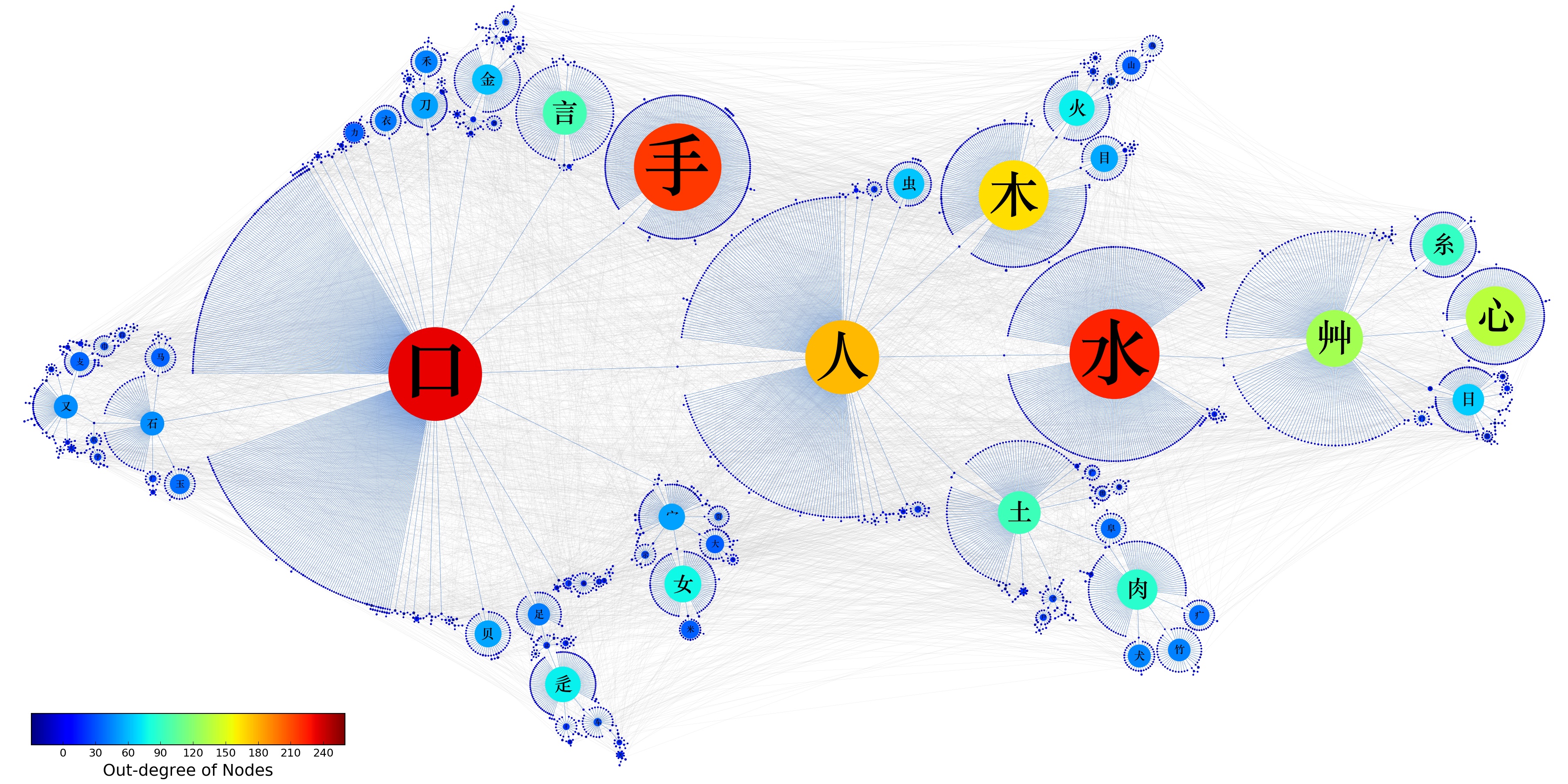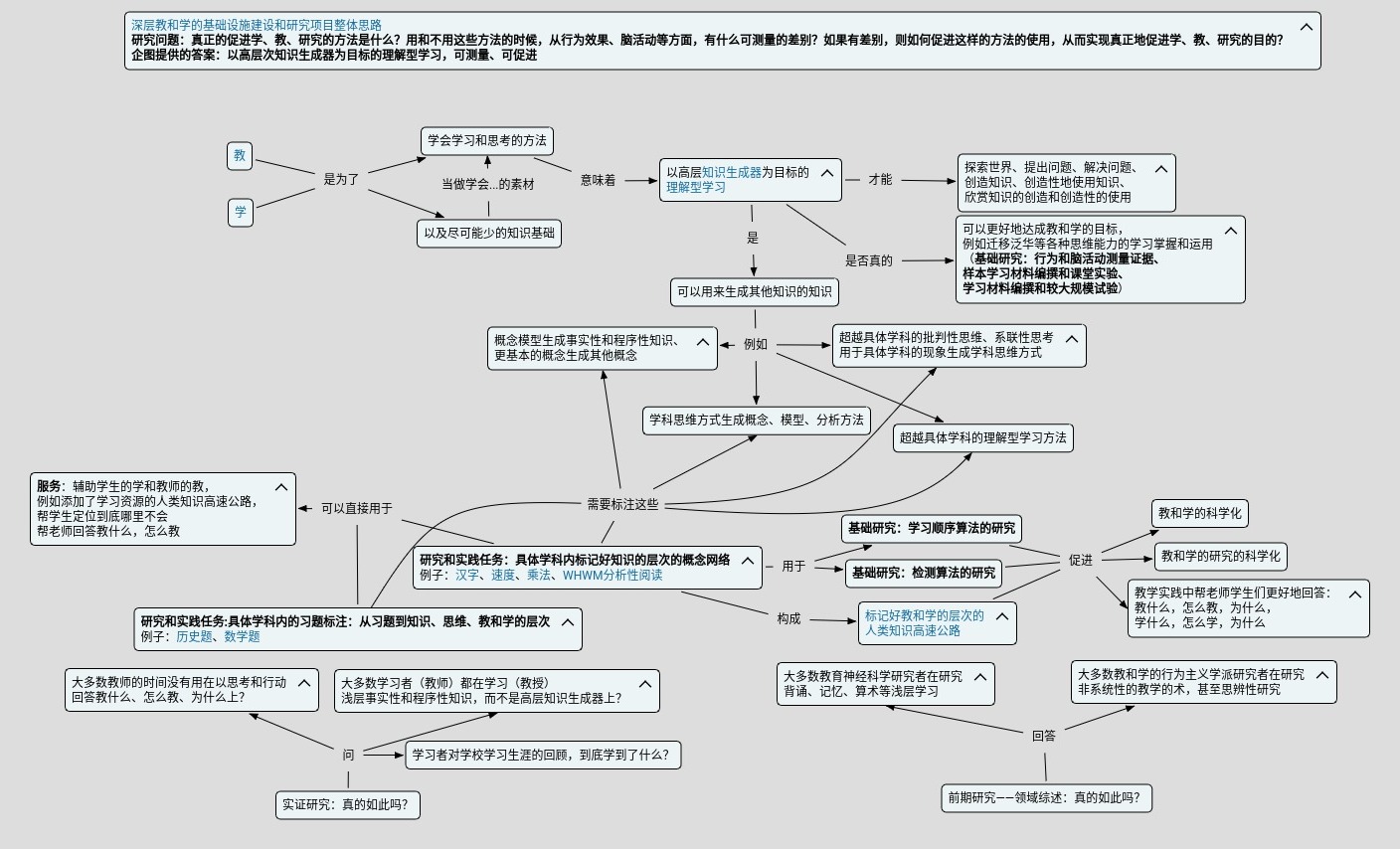Goals of this presentation
- Introducing the new model of education
- Core ideas and concepts
- Ongoing research work on infrastructures and algorithms
- Revealing the connection between the new model and complex networks
- Shoot your questions at me on the moment
Outline
- The New Model of Education
- The $1+5$ levels of knowledge, and the connection among them
- Learning within the same layer and across layers
- From learning to creating knowledge, the levels of creativity
- The network perspective: learning and testing over knowledge networks
- Take-home message
The $1+5$ levels of knowledge
- Level 0, Pre-knowledge: experiences
- Level 1: factual and procedural knowledge
- Level 2: disciplinary concepts
- Level 3: disciplinary big picture
- Level 4: general ways of thinking cross and above disciplinaries
- Level 5: ways of teaching and learning
disciplinary big picture
- Typical research objects
- Typical research questions
- Typical ways of analysis
- Typical ways of thinking
- Typical responsibility of the discipline for the world
- Identifying questions that should/can be investigated in the discipline
Connections among the $1+5$ levels of knowledge
- Concept formation: from low to high
- Concept generation: from high to low
- Concept assimilation: within the same level
- Advanced knowledge generators, the $3+$ level knowledge
Learning via walking on the $1+5$-layer knowledge network
- Currently, more often, learning (rote learning) happens within the same layer
- memorizing factual knowledge
- repeatedly practicing procedural knowledge
- However, cross-layer paths provides often more efficient ways of learning
- Learning via experiencing creation
Seamless transition from learning to creating
- Identifying research objects and questions
- Solving the problems with typical ways of thinking and analysis
- Even creating the advanced knowledge generators
A network perspective of the new model of education
- Knowledge is presented as a multilayer network, with a linking phrase on each link
- the shape of the Sun, level 0
- to form the character “日”, concept formation
- “日”$+$“召” makes “昭”, level 1, concept assimilation
- picto-phonetic compound, level 2
A network perspective of the new model of education
- Knowledge is presented as a multilayer network, with a linking phrase on each link
- making use of concept formation/assimilation/generation to understand Chinese characters, level 3
- generalizing this way of learning to other concepts, level 4 and 5
A network perspective of the new model of education
- Learning within the same level and cross levels helps each other
- Creating knowledge often involves cross-level walking
- Learning and testing over knowledge networks
Learning and testing algorithms, and beyond
- Besides using the connections when learning each individual concept, also
- Recommendations of learning orders
- Diagnostic testing of each learner’s known concepts
- Evaluative testing
Learning and testing algorithms, and beyond
- Core questions on teaching and learning
- What to teach/learn, why
- How to teach/learn, why
- Can the network model help to answer those questions too?
- Identifying big ideas/concepts
- Annotate the levels of teaching and learning
Diagnostic testing algorithm
- Instead of testing each concept independently, use links to determine
- which concept to test
- how to infer from the testing results
- Bayesian Network
- not knowing “刀”(“triangle”) likely also not knowing “召”(“right triangle”)
- knowing “召”(“right triangle”) likely also knowing “刀”(“triangle”)
- Usage frequency order
Learning orders
- Concepts that should be learned first
- the basic/root ones
- the most used ones
- the ones with the most outgoing links
- Cross-layers models are more complicated, thus only results on within-layer learning are presented today
Learning order v.s. learning cost
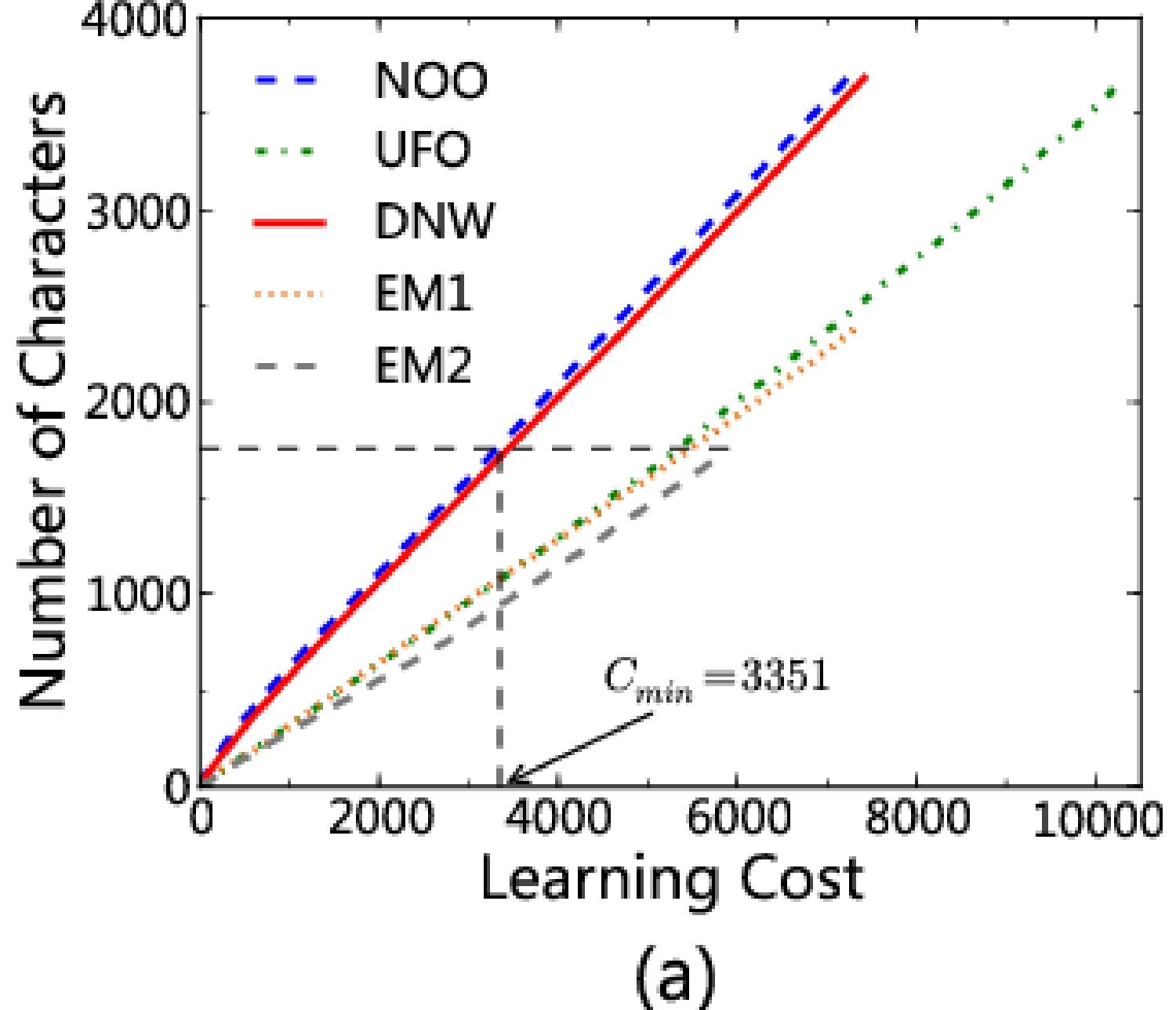
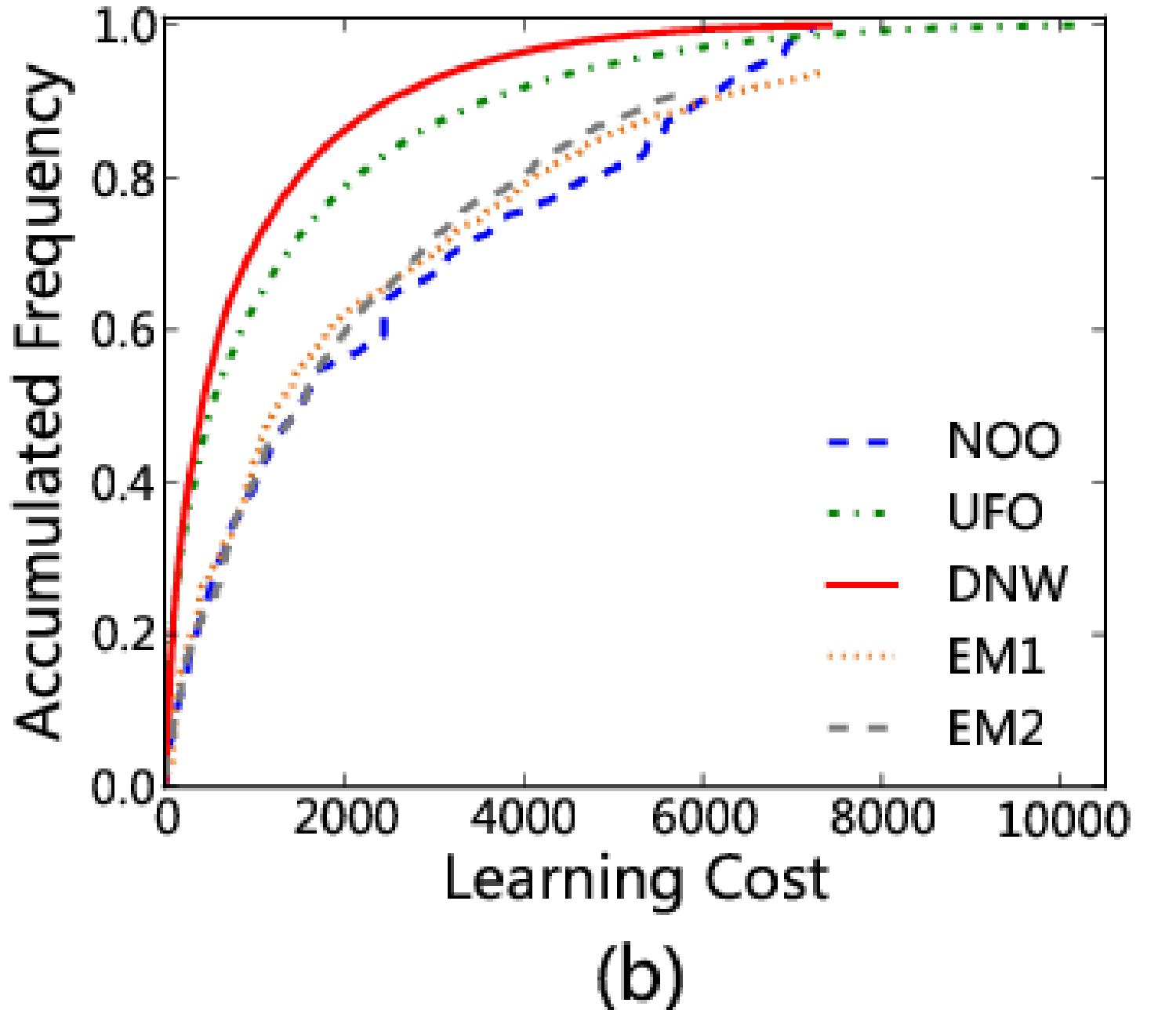
Modeling the learning process
- To check or even find optimal learning orders
- To show that the advanced knowledge generators help to learn more efficiently
- As a diffusion process over the multilayer network of knowledge
- With additional models of adaptive learning cost
Identifying big ideas/concepts
- A big concept is a concept that, once understood, can help to learn many other concepts
- Ideally advanced knowledge generators(AKG) are exactly so
- Can we verify this using the multilayer network model of knowledge?
- How to relate AKG to the previously vaguely proposed big concepts
Identifying big ideas/concepts
- A big concept can be
- the basic/root concepts
- the concepts with more offsprings
- the concepts with more in-coming links
- the concepts with more outgoing links
- the most influential ones defined via PageRank-like algorithms
Big elementary school math concepts
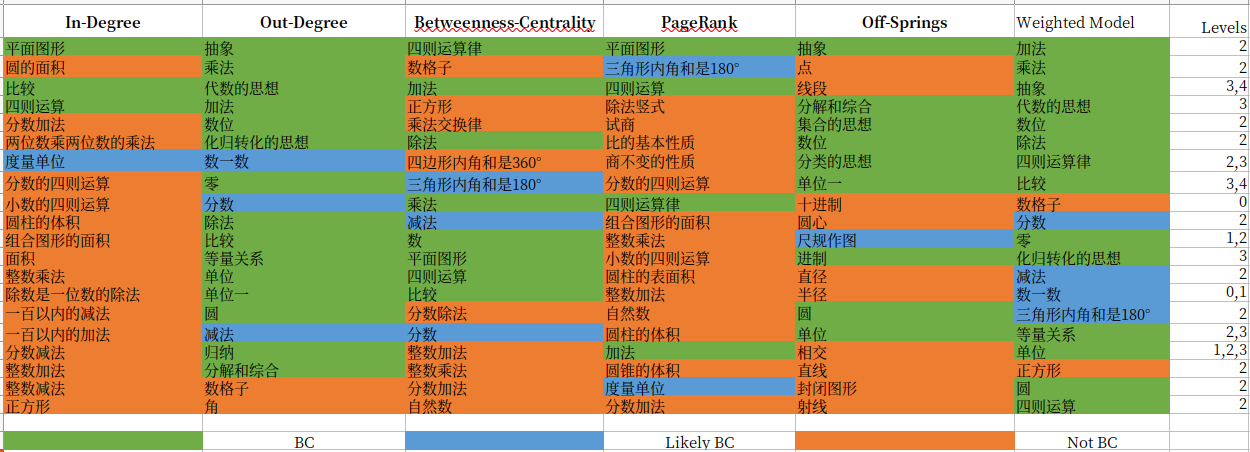
Experiments to check the validity of the above answers
- Test of the diagnostic testing algorithms
- Lab and neuroscience studies, and later classroom studies on
- meaningful v.s. rote learning, with/without advanced knowledge generators
- with/without the recommended learning orders
- Correlation between creativity and meaningful learning toward advanced knowledge generators
Summary
- Multilayer network: A mathematical model of knowledge and education
- Typical questions of education become math problems
- (We are good at) Solving them, and checking the validity of those solutions experimentally
- Implementing the system in school learning and enterprise learning, and for other disciplines
Meaningful learning over human knowledge highway
- All levels of knowledge in all disciplines and their connections are represented as a concept map
- Wiki page on each concept, including an explanation in text, figures, and video
- Example of the creation and creative usage of the concepts
- Learning and testing algorithms behind it
Meaningful learning over human knowledge highway
- Learning towards the advanced knowledge generators, meaningfully
- Learning to become whatever you would like to become, without the limit of disciplines and fixed paths
- Cultivated, protected, and encouraged to be creative, to go beyond
- Maybe even creating new advanced knowledge generators
Take-home message
- This is the way
- to go beyond AI with unlimited factual and procedural knowledge
- let the network-based education revolution begin
- let us contribute to the development of Educational System Science
- Let us make a difference, together
- Let us be movers
Acknowledgement and time for questions
- Thank you for your time and attention
- Change education, change the world
- Collaborators: Xiaoyong Yan, Xiang Cao, Xiaoling Wang, and other members of IESS and the Big Physics team
IESS | The Big Physics Team

